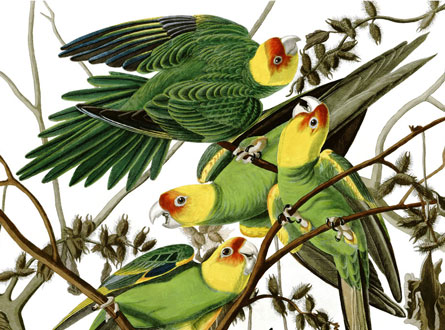Two ecologists have poked a hornet’s nest by contending that a long-overlooked flaw in one form of analysis has inflated estimates of looming species extinctions.

Correcting the flaw wouldn’t change the basic projection that extinctions will be massive, says one of the ecologists, Stephen Hubbell of UCLA. Even so, he and a colleague write in the May 19 Nature, the problem requires revisions in a technique that ecologists use to estimate species extinctions due to habitat destruction.
Outspoken ecologists have already dismissed the work as technical quibbling that threatens to distract attention from the most cataclysmic loss of biodiversity in at least 65 million years. A long-time thinker about extinctions, Stuart Pimm of Duke University, objects to the paper as “truly disastrous.” He says it does advance understanding on a technical point but ignores bigger issues and practices among extinction predictors. “This is going to be the biggest bun-fight in my profession in a very long time,” Pimm says.
But Hubbell insists that he is raising a scientifically substantive issue: “Come hell or high water, we have to be self-correcting. Or why are we doing science?”
Behind the flying baked goods is a long-standing observation, formalized in a standard species-area relationship equation, that bigger areas support a greater number of species than smaller areas do. Hubbell, Pimm and other ecologists agree that humanity’s accelerating destruction of other species’ habitats has become a major force squeezing species into extinction. What they disagree on is how to quantify that process.
The equation that ecologists use to estimate how many species could disappear if a given area is, say, turned into city sprawl has roots in surveys of how many kinds of organisms crowd into an area. A biologist counting all the species in an area has to tramp just far enough to find the first of its kind before adding that name to the list. A species-area relationship based on such data predicts that even a relatively modest land loss dooms a whole species.
Another approach is to find the outer limits of an organism’s range, but that requires traversing much more area than it would take to find one example of a species. Either way, species living only within a surveyed area, considered endemic to that area, are those at immediate risk of going extinct. The new paper proposes focusing on endemics for a more realistic view of what habitat loss might do to the number of species in an area.
“It’s embarrassingly simple,” says Hubbell, who discovered the flaw in collaboration with Fangliang He of Sun Yat-sen University in Guangzhou, China, and the University of Alberta in Edmonton, Canada.
To test this possible flaw in count-the-first-one surveys, Hubbell and He turned to detailed tree data from eight forest patches and two sets of bird data with substantial information on the birds’ ranges. Indeed, the traditional count-the-first surveys didn’t do a good job of reflecting how much area endemic species covered. The discrepancy could cause the standard species-area relationship to add an extra 160 percent to estimates of species loss. To use the better, endemic-based method to project losses of an area’s species from amoeba to zebra, though, “we need a lot more data,” Hubbell says.
What the new paper will mean, if anything much, for the practice of estimating extinctions is the question that launches a thousand, often disputative, buns.
Such a high-profile attack about a technical issue “is going to set us back a long, long time,” says Michael Rosenzweig of the University of Arizona. Estimates of extinction need to account not just for endemic species in an area that get their whole world trashed when the habitat goes but species that may have lost thriving populations that provided sources of immigrants for iffier habitats.
One prominent extinction estimate that Hubbell and He call into question comes from the 2005 Millennium Assessment, which predicted extinction rates in coming years as much as 1,000 to 10,000 times higher than the ho-hum background rates seen during times of relatively mild, natural change in life on Earth.
“It is true that in the 1980s and early 1990s, essentially all estimates of extinction rates were indeed based on species-area relations,” says Robert May of the University of Oxford in England. But more recent estimates, including the work behind the Millennium Assessment, draw on multiple lines of evidence, he says.
“All ways that we measure extinction, not just species-area relationships, point to [extinction] rates that are elevated today,” says paleobiologist Anthony Barnosky of the University of California, Berkeley. In March he and his colleagues published an analysis — not based on species-area relationships — suggesting that ongoing extinctions could within the next few centuries grow to proportions qualifying as the sixth of Earth’s historical mass extinctions. Even using Hubbell and He’s adjustments to dial back a recent high-profile prediction of 18 percent to 35 percent land species losses from climate change could still means losing 10 percent in the not-too-distant future. That’s “an unacceptably high loss by anyone’s standards,” he says.
Broadly speaking, the exact scale of estimated extinctions may not matter much, says plant scientist Vernon Heywood of the University of Reading in England. “Today no one doubts that species extinction is a major issue, and the real debate is about how we are to prevent a further substantial loss of biodiversity,” he says. “That is more about politics and economics than precise modeling.”






